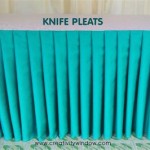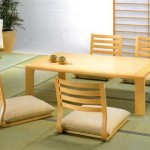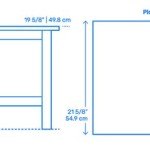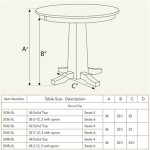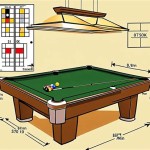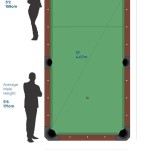What Size Umbrella for Patio Table: A Comprehensive Guide
Selecting the appropriate size umbrella for a patio table is crucial for maximizing shade, providing comfort, and creating a functional outdoor space. An umbrella that is too small will offer inadequate protection from the sun, while an umbrella that is too large may overwhelm the area and create an awkward aesthetic. This article provides a comprehensive guide to determining the correct umbrella size for various patio table dimensions, considering factors such as table shape, seating capacity, and desired level of shade.
The primary function of a patio umbrella is to provide shade and protection from the elements. Choosing the correct size ensures that those seated around the table are comfortably shielded from the sun’s harmful rays. An undersized umbrella will leave portions of the table exposed, negating its purpose. Conversely, an oversized umbrella can create logistical challenges, interfering with movement around the patio and potentially posing a hazard in windy conditions. Therefore, finding the right balance is essential for optimal functionality and safety.
Key Point 1: Understanding the Overhang Equation
The ‘overhang’ principle is fundamental to determining the ideal umbrella size. Overhang refers to the amount the umbrella extends beyond the edge of the table. A general rule of thumb is to aim for an overhang of at least 2 feet (24 inches) on all sides of the table. This ensures that individuals seated at the table are adequately shaded, even as the sun's angle shifts throughout the day. To calculate the necessary umbrella diameter, this overhang must be added to the width or diameter of the table.
For example, if a patio table is 4 feet (48 inches) in diameter, adding 2 feet of overhang on each side results in a required umbrella diameter of 8 feet (96 inches). The equation is relatively straightforward: Table Width/Diameter + (2 x Overhang) = Minimum Umbrella Diameter. Adjustments to this equation might be necessary based on specific shading preferences or the typical positioning of the sun in a given outdoor space.
The measurement of the table should be accurate to ensure a proper fit. Measure the widest point of the table if it is rectangular or square. For round or oval tables, measure the diameter across the center. Keep in mind that rounded edges may slightly alter the perceived seating area, so it's wise to consider the usable surface area when calculating the required overhang.
Key Point 2: Matching Umbrella Size to Table Shape and Seating Capacity
The shape and seating capacity of the patio table significantly impact the umbrella size selection. Round tables typically require round umbrellas, while square tables benefit from square or octagonal umbrellas. Rectangular tables offer more flexibility, accommodating rectangular, oval, or even two smaller round umbrellas depending on the length of the table.
Smaller round tables, typically seating 2-4 people, generally require umbrellas with a diameter of 6-8 feet. Tables seating 4-6 people often need umbrellas with a diameter of 9-11 feet. Larger round or square tables that can accommodate 6-8 people will likely require umbrellas with a diameter of 11 feet or more. Rectangular tables offer a wider range of options. A 6-foot long rectangular table may require a 9-foot rectangular or oval umbrella, while an 8-foot long table may necessitate an 11-foot or larger option.
Beyond the table's physical dimensions, consider the typical seating arrangement. If chairs are frequently pulled away from the table, a larger overhang may be necessary to provide adequate shade. Similarly, if the table is often used for dining during periods of intense sunlight, prioritize a larger umbrella to ensure maximum comfort for diners.
The height of the patio table should also be considered. A taller table might require a slightly larger umbrella to effectively block sunlight at lower angles. Furthermore, the angle of the sun at different times of the day and year should be taken into account for effective shade coverage. In areas with intense afternoon sun, a larger umbrella will offer a greater degree of protection.
Key Point 3: Considering Alternative Umbrella Types and Features
Beyond the standard center pole umbrella, several alternative umbrella types cater to specific patio configurations and shading needs. These include cantilever umbrellas, market umbrellas, and multi-pole umbrellas. Cantilever umbrellas, also known as offset umbrellas, feature a side-mounted pole that allows for greater flexibility in positioning the shade. These are particularly useful for larger seating areas or when a center pole would obstruct traffic flow or conversation.
Market umbrellas are a classic choice, often featuring vented canopies to improve stability in windy conditions. These umbrellas typically have a center pole and are available in a range of sizes and materials. They are well-suited for smaller to medium-sized patio tables and offer a traditional aesthetic.
Multi-pole umbrellas are designed for larger rectangular tables and consist of multiple canopies supported by a single frame. These umbrellas provide extensive shade coverage and are ideal for commercial settings or expansive outdoor dining areas. When selecting an umbrella, consider the frame material (aluminum, steel, or wood), the canopy fabric (polyester, acrylic, or olefin), and any additional features such as tilt mechanisms, crank lifts, and built-in lighting.
Frame materials should be chosen based on durability and weather resistance. Aluminum frames are lightweight and rust-resistant, making them a good choice for coastal environments. Steel frames are stronger but may be susceptible to rust if not properly treated. Wood frames offer a classic aesthetic but require regular maintenance to prevent decay.
Canopy fabric should be selected based on UV protection, water resistance, and fade resistance. Polyester is a budget-friendly option that offers decent UV protection and water resistance. Acrylic fabrics, such as Sunbrella, are more expensive but offer superior UV protection, water resistance, and fade resistance. Olefin fabrics are a good alternative for those seeking a balance between performance and price.
Tilt mechanisms allow the umbrella canopy to be angled to block sunlight at different times of the day. Crank lifts make it easier to open and close the umbrella, especially for larger models. Built-in lighting can enhance the ambiance of the patio and extend its usability into the evening.
Ultimately, the ideal umbrella size and type will depend on the specific characteristics of the patio space, the intended use of the patio table, and personal preferences. By carefully considering the overhang equation, table shape and seating capacity, and alternative umbrella features, it is possible to select an umbrella that provides optimal shade, comfort, and aesthetic appeal.
Proper maintenance is crucial to extending the life of any patio umbrella. Regularly cleaning the canopy with mild soap and water will help prevent the buildup of dirt and mildew. Storing the umbrella during periods of severe weather will protect it from damage. Applying a fabric protectant to the canopy can help to resist fading and water damage. Following these simple maintenance tips will ensure that the patio umbrella provides years of enjoyment.

The Ultimate Umbrella Size Guide You Are Looking For

Patio Umbrella Size Guide Midtownumbrellas Com

Patio Umbrella Guide Buy With Confidence Now

Patio Umbrella Size Guide Midtownumbrellas Com

Patio Umbrella Size Guide How Big Should A Be Hayneedle

The Ultimate Patio Umbrella Buyers Guide

Patio Umbrella Size Guide Midtownumbrellas Com

What Size Patio Umbrella Do I Need For My Table Poggesi Usa

Patio Umbrella Size Guide How Big Should A Be Hayneedle

Patio Umbrella Size Guide Midtownumbrellas Com


